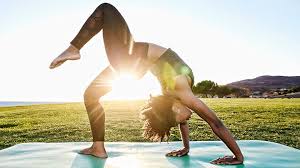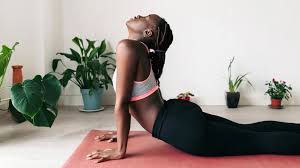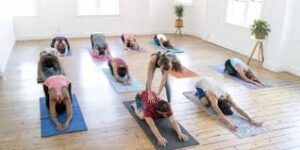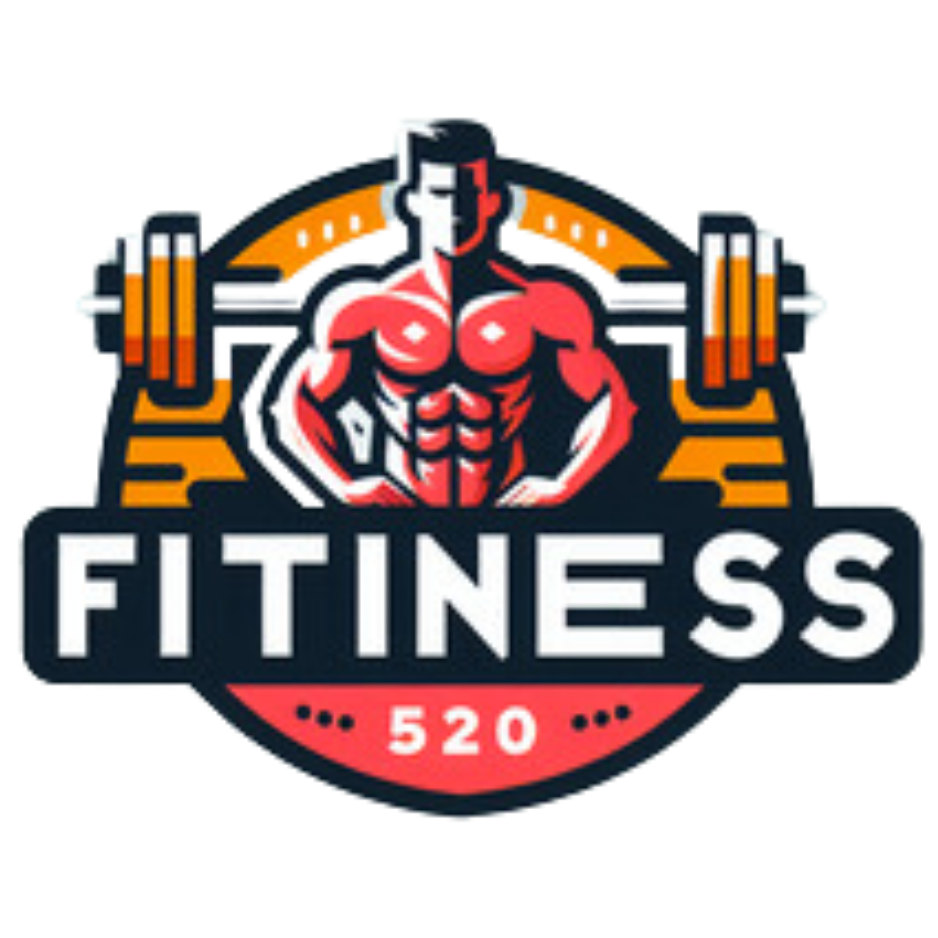In 2024, the importance of flexibility and mindful movement in maintaining overall health and wellness is more recognized than ever. Yoga, an ancient practice with roots in India, has evolved to meet modern needs, offering a variety of routines designed to enhance flexibility, strength, and mental clarity. This comprehensive guide will explore effective yoga and flexibility routines to incorporate into your lifestyle this year. Whether you’re a seasoned practitioner or a newcomer, these tips will help you optimize your practice for better health and well-being.
1. The Benefits of Yoga and Flexibility Training

1.1 Enhanced Physical Flexibility
Yoga is renowned for improving flexibility, which can reduce muscle stiffness and increase range of motion. As we age, maintaining flexibility becomes crucial for joint health and mobility. Regular yoga practice helps elongate muscles and improve overall flexibility, making daily movements easier and more fluid.
1.2 Improved Mental Clarity and Stress Relief
Beyond physical benefits, yoga offers significant mental health advantages. The practice emphasizes mindfulness, breath control, and relaxation, which can reduce stress and anxiety. Incorporating yoga into your routine can lead to improved mental clarity, focus, and emotional stability.
1.3 Increased Strength and Balance
Yoga routines often incorporate poses that build strength and enhance balance. By engaging multiple muscle groups simultaneously, yoga helps develop core strength, stability, and coordination. This holistic approach contributes to overall physical fitness and resilience.
2. Popular Yoga Styles for Flexibility
2.1 Hatha Yoga
Hatha yoga is a gentle introduction to the practice, focusing on basic poses and breathing techniques. It’s an excellent starting point for those new to yoga and looking to improve flexibility. The slow pace and emphasis on proper alignment help build a strong foundation for more advanced practices.
2.2 Vinyasa Yoga
Vinyasa yoga involves a dynamic flow of poses linked with breath. This style promotes flexibility through continuous movement and transitions, making it suitable for those seeking both a workout and an enhancement in flexibility. The variety of poses and sequences helps stretch different muscle groups.
2.3 Yin Yoga
Yin yoga is a slower-paced practice that involves holding poses for longer periods, typically 3-5 minutes. This style targets deep connective tissues and fascia, promoting increased flexibility and joint mobility. Yin yoga is particularly effective for releasing tension and improving flexibility in the hips, lower back, and legs.
2.4 Ashtanga Yoga
Ashtanga yoga is a rigorous and structured practice involving a set sequence of poses performed in a specific order. This style emphasizes strength, flexibility, and endurance, offering a challenging yet rewarding approach to improving flexibility. The repetitive nature of Ashtanga helps deepen flexibility over time.
3. Essential Yoga Poses for Flexibility

3.1 Downward-Facing Dog (Adho Mukha Svanasana)
This classic pose stretches the hamstrings, calves, and shoulders while strengthening the core. Begin in a plank position, lift your hips towards the ceiling, and press your heels towards the floor. Hold for 30 seconds to 1 minute, focusing on lengthening your spine and engaging your muscles.
3.2 Seated Forward Bend (Paschimottanasana)
Seated Forward Bend targets the hamstrings and lower back. Sit with your legs extended in front of you, hinge at the hips, and reach towards your toes. Hold for 30 seconds to 1 minute, maintaining a long spine and relaxed shoulders.
3.3 Butterfly Pose (Baddha Konasana)
Butterfly Pose opens the hips and stretches the inner thighs. Sit with your feet together and knees bent out to the sides. Gently press your knees towards the floor and hold for 30 seconds to 1 minute, feeling the stretch in your inner thighs.
3.4 Pigeon Pose (Eka Pada Rajakapotasana)
Pigeon Pose is excellent for opening the hips and stretching the glutes. Start in a tabletop position, bring one knee forward and extend the opposite leg straight behind you. Lower your hips towards the floor and fold forward to deepen the stretch. Hold for 30 seconds to 1 minute on each side.
3.5 Child’s Pose (Balasana)
Child’s Pose is a restorative pose that stretches the back, hips, and thighs. Kneel on the floor, sit back on your heels, and extend your arms forward. Lower your forehead towards the ground and relax in the pose for 1-2 minutes.
4. Creating a Flexibility Routine
4.1 Warm-Up
Start with a gentle warm-up to prepare your body for stretching. Perform light cardiovascular exercises like jogging in place or jumping jacks for 5-10 minutes. Follow with dynamic stretches to increase blood flow to your muscles.
4.2 Incorporate a Variety of Poses
Include a mix of yoga poses that target different muscle groups in your flexibility routine. Aim for a balanced approach, incorporating poses that stretch the hamstrings, hips, back, and shoulders.
4.3 Practice Regularly
Consistency is key to improving flexibility. Aim to practice yoga at least 2-3 times a week. Incorporate flexibility training into your routine gradually, allowing your body to adapt and progress over time.
4.4 Listen to Your Body
Pay attention to how your body responds to each pose and adjust accordingly. Avoid pushing yourself too hard, as overstretching can lead to injury. Practice mindfulness and focus on your body’s limits to ensure a safe and effective routine.
4.5 Combine Yoga with Other Exercises
For a well-rounded fitness regimen, combine yoga with other forms of exercise, such as strength training or cardio. This holistic approach enhances overall fitness and supports your flexibility goals.
5. Yoga and Flexibility for Different Lifestyles
5.1 Office Workers
For those with sedentary jobs, incorporating yoga into your daily routine can counteract the effects of prolonged sitting. Perform stretches and poses at your desk or during breaks to relieve tension and improve flexibility.
5.2 Athletes
Athletes can benefit from yoga by enhancing flexibility, reducing the risk of injury, and improving recovery. Integrate yoga into your training regimen to complement your sport-specific exercises and boost overall performance.
5.3 Seniors
Yoga offers numerous benefits for seniors, including improved flexibility, balance, and joint health. Choose gentle yoga styles and poses that accommodate your mobility and fitness level, and consider participating in group classes for additional support.
6. Finding the Right Yoga Classes and Resources

6.1 Local Yoga Studios
Explore local yoga studios to find classes that match your flexibility goals and skill level. Many studios offer a range of classes, from beginner to advanced, with knowledgeable instructors who can provide guidance and adjustments.
6.2 Online Yoga Platforms
Online yoga platforms offer convenient access to a variety of classes and routines. Websites and apps like Yoga with Adriene, Glo, and CorePower Yoga provide on-demand videos and programs tailored to different needs and preferences.
6.3 Yoga Workshops and Retreats
Consider attending yoga workshops or retreats for an immersive experience. These events provide opportunities to deepen your practice, learn new techniques, and connect with other yoga enthusiasts.
Conclusion
Yoga and flexibility routines offer numerous benefits for physical and mental well-being. By incorporating diverse yoga styles, poses, and practices into your routine, you can enhance your flexibility, reduce stress, and improve overall health. As we move through 2024, make yoga a central part of your fitness regimen and explore various resources to find what works best for you. Embrace the journey of yoga with patience and dedication, and enjoy the transformative effects it can bring to your life.



